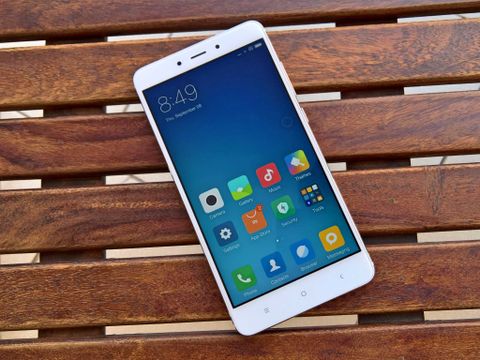The quick take
When it comes to budget smartphones, the Redmi series from Xiaomi is a force to reckon with not just in China, but also in markets like India – the company's second home.
Xiaomi launches phones in quick succession, and pushes the envelope further each time. There's much hype, and a lot of anticipation. Not undeserved, one would say. Launched in China last month, the Redmi Note 4 is a turbo charged Redmi Note 3, and the all-metal budget smartphone looks set to be another winner for the company.
The Good
- Metal chassis with 2.5D glass display
- Beautiful Full HD display
- Long battery life
- Great price
The Bad
- Average camera performance
- Micro-USB, not USB Type-C
About this review
I used the Chinese retail variant of the Redmi Note 4 that ran MIUI 7.3 out of the box, but there was an update for MIUI 8 available immediately. For most of the time, I used it with an Airtel 4G SIM in Delhi NCR.
I used the 2GB/16GB variant which had about 9.5GB of internal storage available out of the box. There's also a higher-end variant with 3GB of RAM and 64GB of storage.
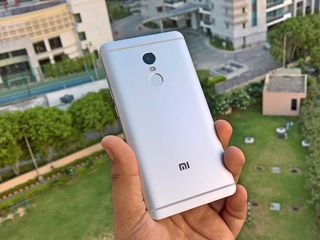
Redmi Note 4 Design
The Redmi Note 4 carries on Xiaomi's design ethos. Apart from rare aberration, most devices in the Xiaomi portfolio look alike, and the Note 4 looks just like the Redmi Pro. That's not a bad thing, really. Xiaomi makes good looking budget smartphones and the Note 4 is no different. There's nothing special, but the industrial design works for most.
However, while the metallic chassis on the Redmi Pro sports a smooth back, there is a hint of cheapness on the Note 4 with rugged surface which gives a feeling of it being less "solid" than the former. Of course, you get what you pay for. The curves on the edges at the back aid the grip, and makes it a nice phone to hold in the hand.
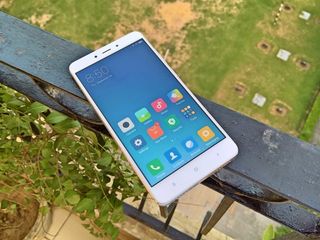
A successor to Redmi Note 3, there are only a few subtle changes on the Note 4. While both phones boast of a full metal unibody design, the Note 4 sports 2.5D curved glass on the front that exaggerates its style. There are changes here and there but unless you look closely, it's hard to differentiate between the two.
At 175 grams, the Note 4 is not light, although it doesn't get too overbearing in the hand. However, since it packs a massive 4100mAh battery, most users who are picking the Note 4 for long battery life would want to overlook this.

Redmi Note 4 Hardware
| Category | Features |
|---|---|
| Operating system | Android Marshmallow 6.0 with MIUI 7.3 |
| Display | 5.5-inch IPS LCD1920x1080 |
| Processor | 2.1GHz deca-core Mediatek MT6797 Helio X20 |
| RAM | 2GB / 3GB |
| Internal Storage | 16GB/64GBMicroSD up to 256GB |
| Battery | 4100mAh |
| Rear Camera | 13MP, f/2.0, PDAFDual LED flash |
| Front Camera | 5MP, f/2.0 |
| Dimensions | 151 x 76 x 8.4 mm |
| Weight | 175 g |
Xiaomi's always looked to pack in a punch in terms of specifications, and the Note 4 is no different. It boasts of MediaTek Helio X20 processor – clearly a high-end processor in a budget smartphone.
Increasingly, smartphone makers are bundling 3GB RAM in budget devices as well, but Xiaomi has chosen to keep it at 2GB for the lower variant. For a heavy skin like MIUI, that is just about okay. More available memory never hurt on Android, and you might want to look at the higher variant, which also quadruples the internal storage from 16GB to 64GB.

That said, the Remi Note 4 performs well on daily usage. Multi-tabbed browsing, interface navigation, and even playing graphic-intensive games is a breeze. The processor offers good enough grunt for most apps and games. It does stutter sometimes when multitasking and the culprit is most often the lack of available RAM.
The Note 4 includes a hybrid SIM slot, so if you'd want the dual SIM functionality, you'd have to be contended with inbuilt storage it offers since you won't be able to put in a microSD card. Another reason to pick up the 3GB/64GB variant.
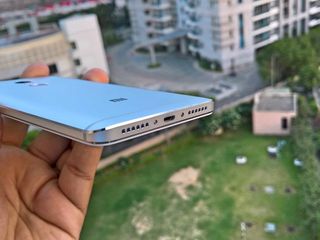
One of the biggest disappointments of the Note 4 is Xiaomi opting to put in a Micro-USB port instead of the newer USB Type-C. Yes, it's a budget smartphone and Micro-USB is not dead yet, but a smartphone coming in second half of 2016 should've been better.
Otherwise, the Note 4 is a winner all the way. The fingerprint sensor works great, and unlocks the phone in a quick snap each time. There's also an IR port on the phone so that you can use it as a universal remote controller. Also, the Note 4 packs in the latest version of Bluetooth v4.2.

Redmi Note 4 Display
The Note 4 sports a beautiful 5.5-inch display panel with 1920x1080 resolution — good for a density of 401 ppi. The 2.5D arc glass accentuates the display. It's vivid with great viewing angles and the colors and contrast are perfect. For a budget device, the display on the Note 4 stands out as one of the highlights.
Outdoors in sunlight, the display is a tad dim, and I preferred to keep it at maximum (or high) brightness than what was set automatically. Still it's crisp and consistent from different viewing angles.
Redmi Note 4 Software
While I assumed the Redmi Note 4 comes with the latest version of the company's proprietary UI, the MIUI 8, it wasn't the case. On first run, I was greeted with MIUI 7.3 running on top of Android 6.0 Marshmallow.
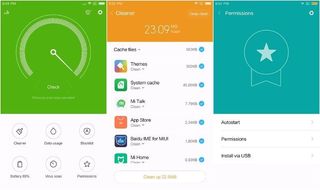
But then, there was MIUI 8 Stable waiting for me, and I updated immediately. While customized Android skins are a matter of personal preference, MIUI has been able to garner a large fan base. And credit where it's due, it's not misplaced. Xiaomi works hard on MIUI bringing features, UX tweaks, and nifty utilities to augment the Android experience.
One of the highlights of the MIUI 8 is Second Space that allows a user two configure two profiles on a device – like virtual desktops so to say. It allows you to keep separate apps or separate layouts for distinct personal and work needs.

Then there's the new Dual Apps feature which allow you to run two instances of apps like WhatsApp that don't allow multiple sessions with different accounts otherwise. Well, I don't have any use for this feature personally, but a lot of people, especially the ones who use two SIMs, have always wanted a functionality like that.
MIUI 8 also boasts of 'Quick Ball' similar to the assistive touch on iOS. You can configure it for frequently used apps and actions on a single tap for easy accessibility. While it is very handy for phablet, Note 4 users would only appreciate it if one-handed usage is a big deal – like for those who take long daily commutes to work or school.
Redmi Note 4 Battery life
One of the highlights of the Redmi Note 4 is its superb battery life. Of course, it packs in a big battery at 4100mAh, but there's also enough power optimizations under the hood that makes it last long – really long. While there's no USB Type-C, the Note 4 does include MediaTek PumpExpress 2.0 technology for fast charging.

On moderate usage, you could stretch the battery life up to about two working days. For a power user like me, it lasted me whole day of being out and about and still had some juice left at the end of the day. Pokemon Go fans, rejoice!
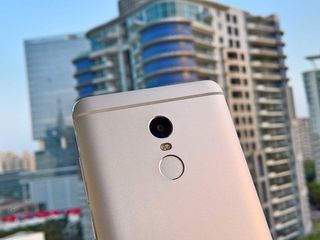
Redmi Note 4 Camera
Unlike the last few Xiaomi devices, the primary shooter on Redmi Note 4 fails to impress. Yes, it's a budget device and manages to click decent pictures, but Xiaomi itself has been one of the companies at the forefront of spoiling budget smartphone buyers offering too-good-to-be-true internals, camera, and build quality.
The 13-megapixel rear camera unit sports a dual LED flash. It does manage to click some nice photos with a decent depth of field effect, but the color reproduction and saturation is not the best. In not exceptionally bright conditions, like indoors or on a gloomy day, the photos are just okay. In well-lit conditions, I did manage to snap a few good ones on Auto mode.












The Note 4 has a great display, but once you take some of those average photos off the phone, you'd notice that the contrast is a tad off. The focus is spot on and quick though, almost the best in any Redmi devices till date.
The camera interface on the MIUI 8 is slick and offers a variety of options with seamless user experience. I'm hoping a firmware update would come soon to improve the camera performance. It's not a bad camera, mind you, but with some of the budget devices – including last couple from the Xiaomi stable – impressing in this critical component, we've started to expect more and more.

Redmi Note 4 Bottom line
The Redmi Note 4 is a pretty good smartphone for its price. It's a capable performer and a decent snapper, but there's nothing exceptional about it. Except the price of course.
If you're in India, you'd not get this variant, mind you. Due to an ongoing legal tussle with Ericsson, Xiaomi cannot sell MediaTek-based devices in India. So, like in the past, Xiaomi will come out with a Qualcomm-based Redmi Note 4 for the Indian market. Hence, there is also a chance, Xiaomi only launches one variant of the same which would then most likely be the 3GB variant, or so we hope.
Should you buy it? Probably
At CNY 899 for the lower specced variant and CNY 1,199 for the higher one, the Redmi Note 4 is a value-for-money device, just like the Redmi Note 3 was. It's not perfect, but at the price, you should be okay to adjust expectations here and there.
Available in three colors – silver, gray, and gold – at the moment you can pick one from Chinese retailer TinyDeal for $170.
